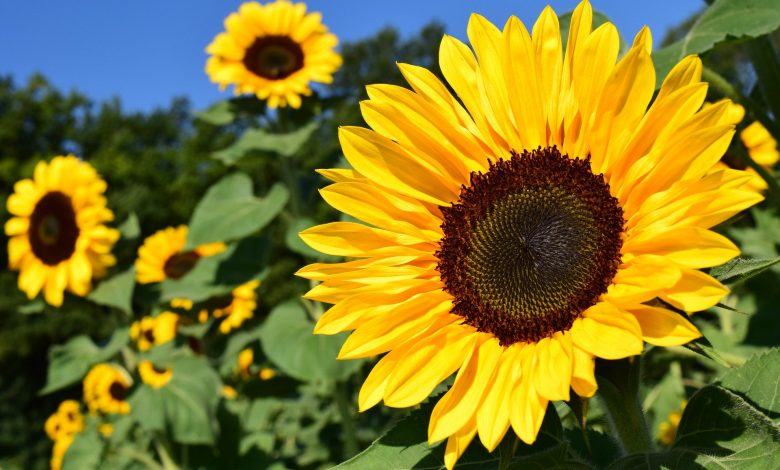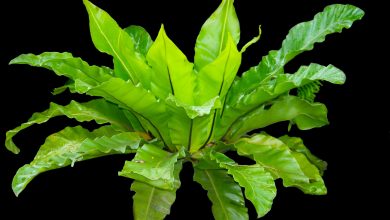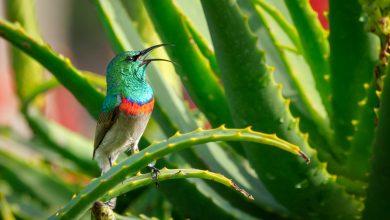Edible Plants to Grow in Your Garden

A beautiful garden is always nice to look at, but have you ever thought about eating your garden? Not surprisingly, there are all kinds of flowers and plants that you can incorporate into your diet. Which ones are safe, and good enough to eat though?
Edible plants can be added into all kinds of amazing dishes, and they won’t leave you feeling ill later on. They’re a great way to add some hardy flavor to meals, or to add atop dishes for color and flair. If you’re thinking about growing some edible plants, you’ll want to be careful! Not everything is safe or tasty enough for you and your guests.
Here are some of the best plants that you can grow in your garden and eat.
Alfalfa
Alfalfa is a part of the pea family, and as a result, it has a mild, earthy flavor the mimics the flavor of vegetables. In most cases, people will use alfalfa sprouts on their dishes, including pastas, salads, and sushi.
Alfalfa has some nutritious benefits if eaten, but gardeners should keep in mind that, if they are growing alfalfa to eat, they can only consume the leaves and young shoots in their raw form.
Forget Me Not
Forget-me-nots are gorgeous plants that grow delicate, lavender-colored flowers. The flowers themselves are indeed edible, and they can be used in an arrangement of ways to suit your preferences.
Forget-me-nots tend to invade unattended gardens, but instead of weeding them, consider harvesting them! Keep in mind that you should only harvest these flowers if they have not been in contact with pesticides or any chemicals. Additionally, forget-me-nots do have a natural chemical called pyrrolizidine, which can cause harm if large quantities are ingested.
The best species of this plant to put on dishes is M.Sylvatica, as they are the safest and most edible. The most popular way to eat forget-me-nots is in their full form on salads or baked goods.

Elderberry
Elderberries are generally found in temperate to subtropical regions, and they are cultivated for all kinds of purposes. When it comes to eating, however, the elderberry is fairly flexible.
The best time to pick elderberries is between August and October, which is when they will be the freshest. You can remove the berries from the stalks and use them in crumbles, pies, and other baked goods.
The elderberry flower is edible, as well as the fruit; however, the raw fruit doesn’t have that attractive of a flavor on its own. When combining the ripe fruit with other ingredients, such as sugar or sauces, you can achieve the sweetness you’re looking for.
Other than the flower and the fruit, all other parts of the elderberry are toxic.
Coneflower
Coneflower is an ideal addition to any garden since it can provide sustenance to both humans and pollinators alike. Both bees and butterflies love the size, shape, and color of these blossoms.
When it comes to planting edible flowers, coneflower might not be the first choice. However, both the leaves and flower petals can be ingested safely. If you’re planning on eating your edible coneflowers, be sure to beat the other creatures who will have their eyes set on the petals as well.
Pineapple Weed
Out of all of the plants you can grow and actually eat, pineapple weed has one of the most attractive names for ingesting. The hearty plant is deemed a weed, but those who recognize it will know that it bears a tasty treat in its buds.
This hearty plant is often confused with chamomile since they look so similar, and both actually make for great teas. The flower buds are the safest part of the plant to eat, and the buds can be used fresh in salads or dried out for making teas.
If you notice this plant on one of your hikes, feel free to chomp on the buds raw, as well!
Sunflower
Sunflowers grow to be an average of one to two meters tall, and they are a welcomed sight for hungry hikers passing by. It’s rare to see a sunflower that hasn’t already been consumed or which isn’t already occupied by a buzzing pollinator.
This edible plant is wonderful because so much of it can be consumed safely.
Sunflower seedlings are one of the first things you can consume from this flower, and they’re best if you find them or thin them when they’re about six inches tall. You can toss these sprouts on salads, sandwiches, and more.
Adult sunflower leaves can also be consumed, either in their raw form or cooked on the stove. Try the leaves in soups or a stir-fry, or mix them with some oils for a tasty salad. Just be sure to remove the ribs of the leaves first.
The petals of the sunflower are what make it beautiful, but if you’ve planted additional sunflowers for eating, you can use these in salads or for garnishes. The petals will add a bittersweet that you can combat with sweet fruits.
In addition to all of this, sunflower stalks can also be consumed raw or used as a replacement for celery. Add them to salads for a crunch, or add some peanut butter to them for a snack. Keep in mind, younger sunflowers will have softer, more manageable stalks, while older sunflower stalks will be more woody.
One of the most recognizable parts of a sunflower that you can eat are the seeds. Though smaller than commercial versions, these raw seeds are safe and delicious. The seeds are ready to be collected once the green disc at the back of the flower becomes yellow in color.
Keep the sunflower head in a dry place until the seeds are mature. Rub the flower to release the seeds, and cook them in the oven until the seeds crack open.
Cattail
Cattails are recognizable plants with their large, cigar-shaped tops in a rich brown color. Cattails are most commonly found in wet, swampy areas, and you can grow them around a pond or in wetter areas of your property.
Most of this plant is edible, including the rhizome at the very base of the plant beneath the mud. If you’re going to be eating the rhizome, you’ll want to wash off all of the mud and chop up the pieces small before adding them to a skillet.
Young stems can be eaten raw, while the leaves will taste better if they’ve been boiled. For a more intricate process, you can also use the rhizome to break down into a flour for cooking.

Milk Thistle
Milk thistle may not look like it can be eaten, but under its prickly exterior, there are all kinds of opportunities for consumption. Milk thistle is considered a medicinal plant, and its various parts have been used to rejuvenate human livers and cleanse people of poisons.
The roots, leaves, stem, and buds of this plant can all be consumed raw.
The leaves can be used raw in salads and smoothies, while the seeds can be crushed for teas, smoothies, and cereals. In addition, the seeds can also be extracted for their oils.
In terms of the milk thistle shoots, they can be boiled or eaten raw and generally replace kales and cabbages. If you want to avoid the bitter taste of the milk thistle stalk, you’ll want to peel back the stalk and soak it in water first.
The roots can be eaten raw in salads or as a snack, dried and ground down or boiled for a softer texture. Additionally, the flower buds of this plant can be steamed or boiled and eaten on their own or added to dishes.
The general flavor of the milk thistle is bitter, but you can easily sweeten it up with other ingredients in your dishes.
New England Aster
The New England Aster is commonly referred to as an aggressive weed, and certainly can take over a garden if not pruned. However, save on leaving behind waste and harvest these flowers when they’ve become too overwhelming in your space.
The New England Aster is a very beautiful flower that is most commonly a pale purple color. You’ll find them growing in prairies and open spaces, but they can be cultivated in gardens as well.
If you want to grow edible flowers in your garden, the New England Aster is almost completely edible. Try cooking with the stem, leaves, and flowers, or consider adding them raw to salads and as garnishes.
Some believe that there are health benefits included in the consumption of this flower, including the easing of fevers, muscle pain, and diarrhea. The flavoring is earthy and bitter, but also aggregable.
Dandelion
The next time you go to pull out all of your dandelions from the yard, you may want to think twice about what you do with them. Instead of throwing them into the brown bag for pick-up, consider their consumption properties first!
The great thing about these pesky weeds is that they are entirely edible, so long as no chemicals have been used on or around them. You can eat the roots, stem, leaves, and petals without consequence.
Eating dandelions is said to help with liver support, as well as detoxification. It is also said that the greens from dandelions can provide 535 percent of the recommended daily intake of Vitamin K. Additionally, consuming dandelion can help with bone strengthening, and may help fight the onset of Alzheimer’s Disease.
Need more? This little weed can also provide your daily intake of vitamin A, as well as large helpings of fiber, vitamin C, riboflavin, iron, and potassium.
Because they are easy to manage and cook, you can use dandelions with pretty much any dish. This includes adding them to sandwiches, fresh salads, eggs, pestos, teas, coffees, and more! If you like to create new recipes in the kitchen, dandelion is one of the safest plants to experiment with.

Chicory
Chicory is no doubt one of the prettiest plants that one could consume, and it is a welcome sight when found on a trail with hungry hikers. Chicory is a member of the dandelion family, which bodes well for anyone who wants to try and cook with it.
The leaves and flowers of this plant can be ingested raw, or they can be mixed in with dishes like salads and sandwiches. Keep in mind, the roots of this flower are not edible unless they are boiled, so it’s best to work with the roots only if you’ve grown them in your garden and have access to cooking tools.
Bull Thistle
If anything looks completely inedible, it’s the bull thistle. This spikey, scary-looking plant does a good job of hiding its own culinary possibilities from those who wander by. It has a thorny stem, and the edges of its leaves are also adorned in pricks.
If you’re going to be consuming this plant, you’ll want to be careful. The stalk of the bull thistle is the best part to eat, as it tastes similar to cane sugar. It’s got that hint of sweetness and has a similar texture to celery.
The best time to harvest your bull thistles are when they are still young, since older plants will be tougher to chew and become more bitter. The leaves should be removed, as well as the outer layer of the stalk. Then, you can chop up the piece into slices or cubes depending on what you’re doing with it.
You can eat the stalk raw for a snack, or add it to vegetable salads, stews, and more.
Wild Black Cherry
Just the thought of plucking down a plump, rich cherry for eating is enough to make any salivate! However, wild black cherries are one of those wild plants that you’ll need to careful about when growing and consuming.
Everyone should always exercise caution when it comes to eating wild fruits. Many varieties look similar to one another, and yet a few of them can be very harmful to your health.
Wild black cherries are edible; however, they must be pitted before consumption. This is because the pits actually contain cyanide and may result in serious poisoning.
Additionally, toxins also await in the leaves, twigs, and bark of this plant. If you really enjoy wild black cherries, it’s best to only have them in moderation. Large amounts can cause illness, so keep consumption low.
Like most berries, pitted black cherries can be used in salads, as garnishes, in beverages, or eaten on their own.
Red Clover
Red clover is part of the clover family, and is often regarded as one of the most delicious plants in the family. When it comes to plants you can grow and actually eat, red clover is a great choice. The flower is pretty, their leaves are unique, and you can eat almost the entire plant!
The most common parts of the red clover to eat are the flowers and leaves, but they are generally much easier to eat if they are boiled and softened first. Gardeners will be happy to know that these flowers do have some health benefits, and they can be cooked for a variety of dishes, including soups, salads, or blended down into tea.
Red clover is said to reduce inflammation in the body, and consuming red clover tea can help lower high blood pressure. Additionally, the plant can be eaten to help boost the immune system, ease menstruation pain, and increase antioxidants to prevent infection.
Tea Plant
The tea plant is, not surprisingly, a large contributor to many of the teas that we enjoy. Although it usually looks like a shrub in urban areas, a tea plant can grow into a tree with a bowl canopy if its left to its own devices.
One of these plants can live anywhere from 30 – 50 years in the right conditions, which means gardeners can reap the benefits of this plant for a long time if care is taken.
The leaves and flowers of this plant are the most sought-after for consumption, and it is suggested that people eat the part raw as opposed to making tea. Eating the plant’s pieces directly ensures that you get the most benefits from the plant.
An oil can also be obtained from the seed of this plant, although the oil must be refined before it can be used or ingested.

If you want to try something new with your garden, why not experiment with growing and cooking these edible flowers? As long as your garden hasn’t been treated with any chemicals, you’ll be able to grow, harvest, and explore with the different flavors that blossom around you.
Of course, if you’re thinking about consuming any plants that aren’t on this list, be sure to do some thorough research beforehand. This will ensure that you are eating plants that are safe, or that you know how to prepare them in a way that they will be consumable.



